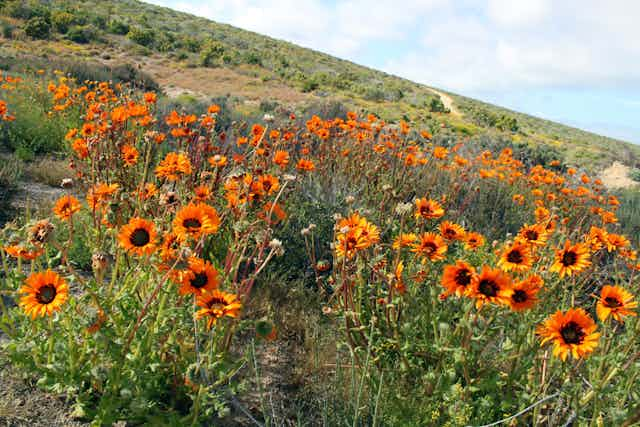If you lived in London at the height of William Shakespeare’s fame, in the 15th century, you probably knew a fair amount about plants. The famous playwright often alluded to potions and poisons derived from plants, and most of his audience would have recognised them. By comparison, research has shown that most modern Londoners can’t name more than a few wild flowers.
This is true of most people in most cities in the world.
There’s a name for this inability to notice or recognise plants in one’s own environment: “plant blindness”. Part of the reason for this is that urban dwellers have been separated from nature; there’s a disconnect between us and the environment, and we’re blind to the natural world around us.
Two botanists, James Wandersee and Elisabeth Schussler, have proposed that our inability to see and notice plants is because they lack visual attention cues. They don’t have a face; they don’t move in the way that animals do; and they aren’t threatening. Our eye-brain system and the visual cortex filter out so much “data” from what we see daily that most of the visual information about the plants we see is discarded.
Humans have also placed themselves above animals and plants for centuries.
So why is plant blindness a problem? Many of our biggest challenges of the 21st century are plant based: global warming, food security and the need for new pharmaceuticals that might help in the fight against diseases. Without a basic knowledge of plant structure, function and diversity, there’s little hope of addressing these problems.
Another issue is that children who are not taught about plants have an incomplete knowledge of the world around them. They grow into adults who don’t care about the environment and the natural resources we rely on every day. The lack of in-depth plant sciences education in schools perpetuates the problem, as students do not know that there are various careers in the plant sciences.
Without well trained scientists, many potential threats such as the effects of global warming and devastating plant diseases could be missed.
How plant blindness happens
Plant blindness begins in childhood, exacerbated by how little attention is paid to botanical content in school. For example, in South Africa only about 11 hours are devoted to plant related content in the foundation phase at school (grade R-3). In the senior phases (grade 7-9) only 11 hours are devoted to content that’s specifically focused on plants.
This lack of botanical content is echoed in school curricula worldwide. In the US, school science textbooks devote only between 14 and 20% of their content to plants. This hampers a positive attitude towards plants and the development of a relationship with the environment. It does not inspire pupils to want to know more about plants or to care for their environment.
The problem extends into higher education. The number of students studying botany and plant sciences at universities has declined so much that universities across the US are shutting their herbaria. In the United Kingdom, you can no longer enrol for a Botany degree.
Statistics about the standing of botany or plant sciences education in South Africa and elsewhere in Africa aren’t readily available. However, the advancing age of practising botanists together with an inadequate of training of young botanists is a source of concern. This leaves a worrying gap – for example when it comes to things like crop diseases.
Scientists are a first line of defence against these and can play a key role in managing any threat. For example, in 1971 a fungal infection decimated most of the US’s corn crops. Plant scientists were able to identify the problem and take steps to mitigate it, avoiding a major disaster.
Plant scientists also contribute to food security on many different levels. Medical or ethnobotanists are involved in the discovery of new drugs.
Possible solutions
So can plant blindness be solved? The general consensus among researchers is “yes” – but it will not be easy.
For starters, countries must prioritise scientific and social education about plants among children. But, since psychological studies have shown that education alone is typically not enough to alter behaviour, it’s important for kids also so get hands on with plants. Direct experiences allow people to connect with plants on a cognitive and emotional level. For example, parents can encourage their children to plant some vegetables and then cook dinner from the harvest.
There are also many botanical gardens around the world with sections especially designed to foster interests in plants. If there’s one in your city, go and visit – it’s a great way to open your eyes to the existence and value of plants.
Governments have a role to play, too. South Africa’s Department of Science and Technology has placed a large emphasis on plants in growing its bio-economy strategy.
In broad terms, this involves using activities such as agriculture and biotechnology to generate economic output. But for this to work, the government needs well trained scientists who can work in the relevant different sectors.
The government must work to develop existing plant scientists, and put in place incentives to draw new people to the field. Funding, access to next-generation technologies and good communication strategies that show the importance of plant sciences would all be useful approaches.

